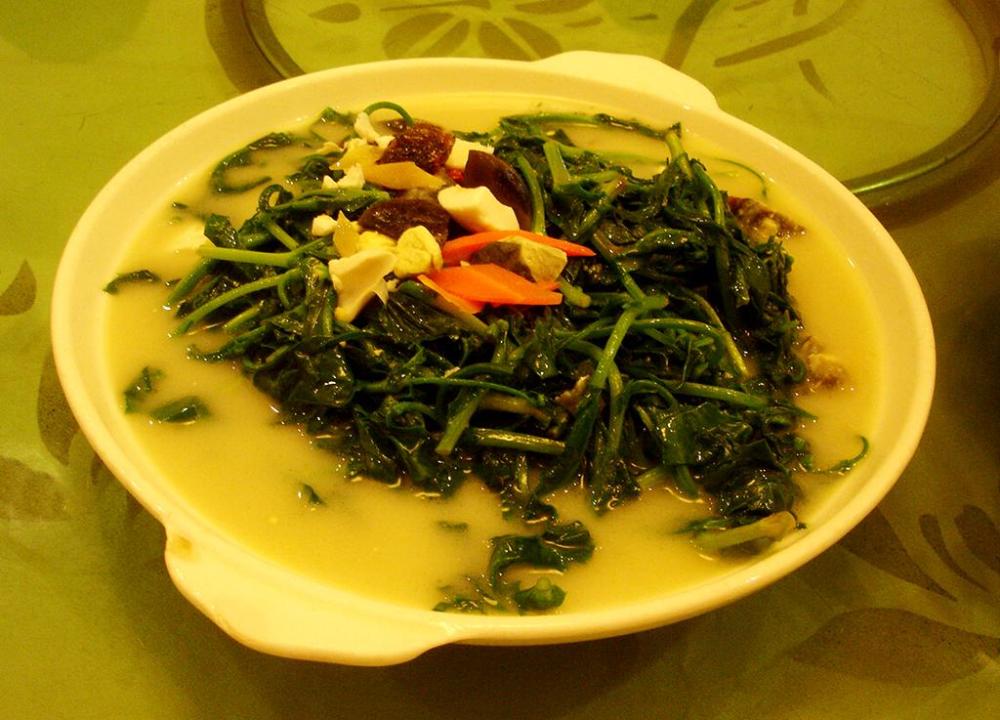48. 一点红 (yī diǎn hóng) / 叶下红 (yè xià hóng)
一点红 (yī diǎn hóng) or 叶下红 (yè xià hóng), Emilia sonchifolia, also known as lilac tasselflower or by many other names, is probably native to east Asia, but naturalised in all the world’s tropics. The Chinese names both refer to ‘a drop of red’, this presumably being in respect of the flowers. Considered a weed most places, it is used both medicinally and culinarily in China. It is always foraged from the wilds.
一点红 (yī diǎn hóng)
Medicinally, it is used to treat snake bites, as well as fever, sore throats and diarrhea.
In the dining room, the young leaves are served as a green vegetable, usually stir-fried. I’ve also had it in a broth with century egg – a nice dish accompanying Zhuang Lemon Duck in Nanning.
The leaves are always picked before the plant flowers and can be eaten raw in salads, but the Chinese don’t do that.





